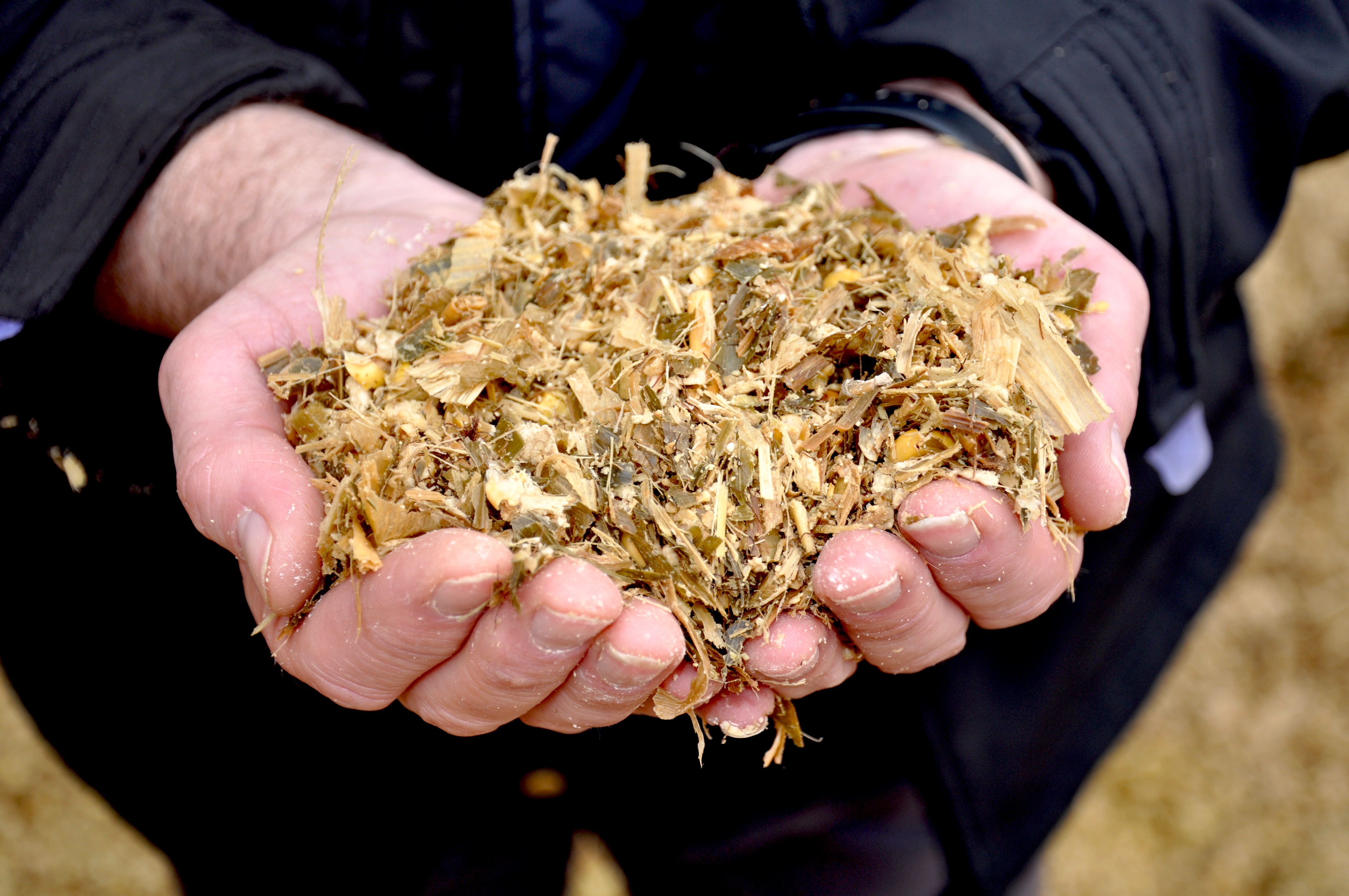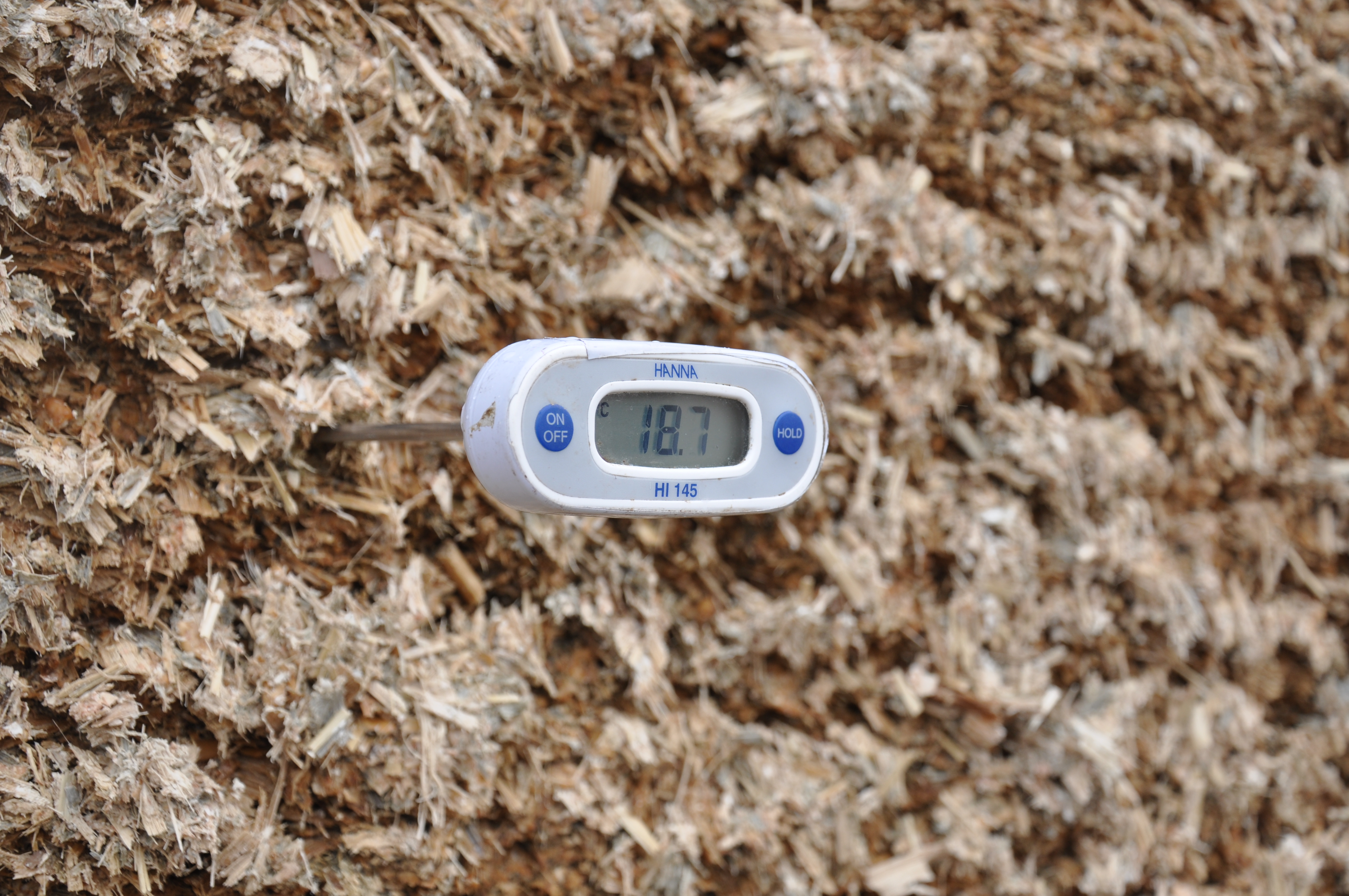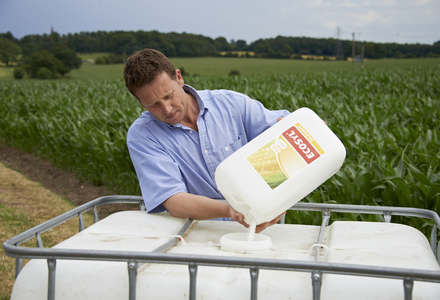Five loss reducing steps for your maize harvest
26 September 2018
With grass silage stocks for winter under severe pressure, the launch of Volac’s latest Cut to Clamp initiative for maize silage couldn’t have come at a better time.

Put 1,000 tonnes of maize into your clamp and typically you might only end up with about 700 tonnes for feeding your livestock, says Volac product manager Jackie Bradley.
Many of those missing tonnes will have effectively provided a meal for undesirable micro-organisms, she says, and all at your expense.
“Around 80 of those tonnes are typically lost due to inefficient bacterial fermentation in the clamp,” says Mrs Bradley, “while another 200 are typically lost to yeasts and moulds causing aerobic spoilage, commonly detected as heating. But losses can be much higher.
The serious point is that many farms wouldn’t want those typical losses in a good forage year, let alone a bad year like this one. Plus, it’s not only quantity at stake. There can quality losses too.
While losses cannot be eliminated entirely, Mrs Bradley says they can be cut. This is what the new Cut to Clamp initiative for Maize is all about.
There is no single answer to achieve this. Instead, Cut to Clamp Maize guides farmers through five important loss-reducing steps – planning, harvesting, treating, clamping and feeding.
Help is available via literature, a dedicated website, and free on-farm silage consultations,” she adds.
1. Planning
The starting point to cutting losses is to understand what causes them, says Mrs Bradley.
She says: “Successful silage production starts with rapid production of acidic conditions in the clamp through fermentation. These acidic conditions, in turn, ‘pickle’ the forage.
“Fermentation happens naturally, but the problem with a natural fermentation is there are both good and bad bacteria present.
“Bad bacteria will ferment sugar in the crop into lactic acid, which you want, but also to carbon dioxide, which waste’s your silage’s energy. They also produce unwanted weaker acid at this stage, which allows undesirable micro-organisms to feed on your silage for longer.
By comparison, good bacteria, such as Lactobacillus plantarum MTD/1, ferment sugar only to stronger lactic acid, which rapidly inhibits the undesirable micro-organisms. They also don’t produce carbon dioxide. So there is less loss of dry matter.
That said, this is only part of the picture, says Mrs Bradley, because maize is also susceptible to aerobic spoilage (heating) – in which undesirable yeasts survive the initial fermentation, feeding on the lactic acid when exposed to air, and further reducing the tonnes of dry matter through production of carbon dioxide and heat. It can also lead to reduced silage palatability and mycotoxin production, she notes.
“As well as ensuring a good fermentation in maize, it is therefore vital to stop these yeasts – by both reducing their numbers early on and keeping out the air that they need.
“The planning stage is about laying the foundations for this. For example, minimising contamination from last year’s mouldy silage by cleaning the clamp and surrounding area thoroughly. Also, by starting to make the clamp airtight by lining walls with polythene, which is a better barrier than concrete to air.”
Other planning tasks include informing your contractor of the anticipated harvest date, says Mrs Bradley, rather than only calling on the day you want them. That way, you’ll have a better chance of harvesting the crop on time.
Find out more about Step 1: Planning
2. Harvesting
The aims at harvest are to cut the crop at the optimum percentage dry matter and starch content, but also at the correct height and chop length, says Mrs Bradley, so it is set up for a good preservation.
She says: “Aim to harvest at a whole plant dry matter of 30-33%. Harvest too early, and starch in the kernels won’t be fully formed. Harvest too dry, and it is more difficult to consolidate and remove air from the clamp, increasing the risk of heating.
“To gauge the optimum percentage dry matter, collect at least five representative cobs. Pressing your fingernail into the exposed kernels should result in a soft cheese texture at top of the cob but leave no indentation in kernels at the middle and bottom.
Next, break cobs in half. A visible line will indicate where the milky white sugar portion in the kernels changes to solid yellow starch. You want one-third to one-half of the kernel as yellow starch. Confirm dry matter results using an oven or microwave test.
“Remember, if growing ‘stay green’ varieties, the cob may be ready even if the plant does not look it. If you wait until the plant looks mature, it may be 40% DM and past its best.”
Optimum cutting height
Even if looking for extra bulk this harvest, don’t be tempted to cut maize plants too low, stresses Mrs Bradley.
The base of the stalk has little nutritional value and mould spores often start here, plus it increases the risks of soil contamination and mycotoxins, she explains.
Optimum chop length
“As with cutting date, chop length is about achieving the correct balance. Short chop lengths will make consolidation to remove air from the clamp easier, but will impact on how the silage performs in the rumen. Consider chopping to 1.5 - 2 cm,” she suggests.
Find out more about Step 2: Harvesting
3. Treating
The reason we treat is to take control of the clamp’s microbial processes, Mrs Bradley explains.
“You control other stages, such as liming, analysing silage and balancing the ration. But too often people don’t take control of the preservation. Decisions at ensiling can affect the quantity and quality of the silage you feed for 200 days of the year.

“For maximum control, choose an additive targeted at both improving fermentation and reducing heating.
Ecocool, for example, contains two strains of beneficial bacteria – one for each of these issues. In trial work, while the temperature of untreated silage climbed to 8oC above ambient just 55 hours after air exposure, Ecocool-treated silage showed no heating for more than nine days.
Find out more about Step 3: Treating
Download Ecocool Product Brochure
4. Clamping
During clamping, says Mrs Bradley, you want the best fermentation and to starve spoilage organisms of air.
Fill the clamp in horizontal layers no more than 15cm deep, which is the maximum that can be consolidated effectively to squeeze air out. Many people still fill using a wedge, but this makes it difficult to maintain 15cm layers, with many clamps not consolidated enough.
“Calculate the weight of machinery needed to pack to a density of 750 kg of fresh maize or more per cubic metre. As an illustration, even two, 14-tonne tractors rolling continuously wouldn’t be enough to achieve this with a typical harvest rate of 120 tonnes per hour.”
Once the clamp is filled, start the sealing process with an oxygen barrier film on top, suggests Mrs Bradley.
“On top of that, use a single 1000-gauge or two 500-gauge polythene sheets, then pull tight and fold together with the side sheets to create a seal.
To prevent damage, put a woven sheet over the top, then weight with mats, gravel bags, touching tyres or bales. Net to stop birds, and bait to stop rodents, she says.
Find out more about Step 4: Clamping
5. Feeding
The feeding stage is about continuing to protect silage quality, says Mrs Bradley, and keeping it cool once exposed to air.
She says: “Minimise air ingress into the open clamp by using a block cutter or shear grab to keep the face tidy and moving the face back quickly.
Never leave the top sheet hanging over the face. It gets extremely hot under there on warmer days, encouraging mould. Instead, roll the top sheet back, and do it so it diverts rain water on top of the clamp away from the face. Rain getting into silage causes fluctuations in percentage dry matter, and cows like stable dry matters.
Any silage that falls off the face should be cleaned up to minimise mould spores,” she explains.
Find out more about Step 5: Feeding
For more information on Volac’s Cut to Clamp initiative visit: www.cuttoclamp.com
_listing.png?1625570203)
